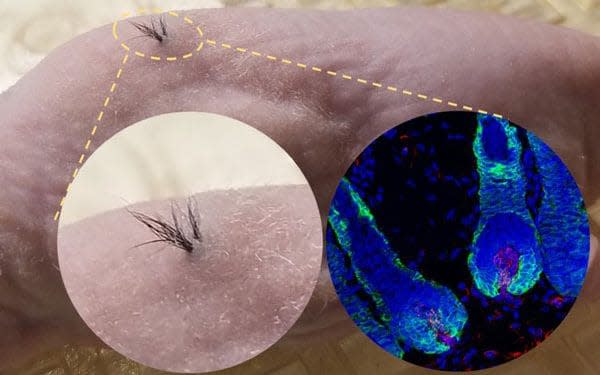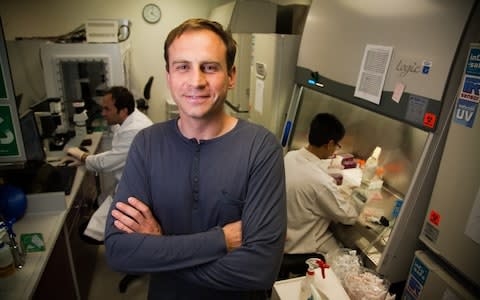Hair grown through skin using stem cells in breakthrough that could cure baldness

A cure for baldness is on the horizon after scientists created hair that grows through the skin using human stem cells. Currently transplanting hair follicles from one part of the head to the other is the only option for the millions of Britain facing male-pattern baldness, alopecia or burns.
But now scientists in the US have coaxed human pluripotent stem cells - the type which can become anything - into dermal papilla cells, which regulate hair follicle formation, thickness, length and growth.
Usually dermal papilla cells cannot be obtained in large enough amounts to be useful for restoring hair growth. But growing them from stem cells means scientists can create an unlimited supply for transplantation.
The team showed it could be done in 2015, but then the hair appeared haphazard and unnatural. Now four years on, they have refined the process to create tufts of hair that look and feel real.
It marks an important step towards the development of an injection which could treat hair loss.

“Our new protocol overcomes key technological challenges that kept our discovery from real-world use,” said Dr Alexey Terskikh, an associate professor in Sanford Burnham Prebys' Development, Aging and Regeneration Program.
“Now we have a robust, highly controlled method for generating natural-looking hair that grows through the skin using an unlimited source of human stem cell-derived dermal papilla cells.
“This is a critical breakthrough in the development of cell-based hair-loss therapies and the regenerative medicine field.”
The not-for-profit Sanford Burnham Prebys Institute, based in California, is largely funded by Sanford Health, which helped Jack Nicklaus, the golfer, regain his swing through injections of stem cells in his back.
The new technique uses a 3D biodegradable scaffold made from the same material as dissolvable stitches which controls the direction of hair growth and helps the stem cells integrate into the skin.
Tests were carried out on mice which had been engineered to be without body hair. When the human stem cells were injected under the scaffold, small tufts were shown to grow like normal hair.
Scientists are hopeful that in future they will be able to take a blood sample from a patient, isolate their stem cells and coax them to become huge amounts dermal papilla cells before injecting them directly into the head, where they will embed and grow.
Taking cells directly from the transplant patient also means there will be no danger or rejection.
Two-thirds of all men will eventually be affected by male pattern baldness in the UK, which means that 7.4 million men are losing their hair at any one time.
Genetics, aging, childbirth, cancer treatment, burn injuries and medical disorders such as alopecia can also cause the condition, and hair loss can accompany emotional distress leading to anxiety and depression.
“Hair loss profoundly affects many people's lives,” said Dr Richard Chaffoo, a plastic surgeon who founded La Jolla Hair MD and is a medical adviser on the project,
“A significant part of my practice involves both men and women who are seeking solutions to their hair loss.
“I am eager to advance this groundbreaking technology, which could improve the lives of millions of people who struggle with hair loss.”
The research was presented at the International Society of Stem Cell Research in Los Angeles.

 Yahoo News
Yahoo News 
